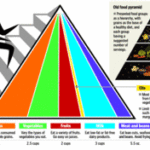South Beach, Robert Atkins, Jenny Craig, Weight Watchers, the Zone…every year frustrated dieters pour millions of dollars into the diet industry, taking up with a multitude of household names in a quest to shrink in size. Some might find success with a program or product that conditions them to eat and live healthier, while others may bounce from website to milkshake to mall storefront looking for their diet soul mate. Temporary solutions that give away to massive backslides are certain to further discourage dieters into complacence, yet anyone who wishes to shed pounds and keep them off may want to consider a lifestyle change rather than a thirty-day quick fix. The late Edgar Cayce proposed such a regimen that is still in use today.
Cayce may be better known these days for his physic abilities and various predictions, his writings on reincarnation and fascination with the legendary lost continent of Atlantis. Yet in his early years, Cayce was known as a medical intuitive with the ability to diagnose illnesses and other conditions with alternative, drugless therapies. His method of lying in an unconscious state and dictating his remedies earned him the nickname “The Sleeping Prophet,” and it is through his more than fourteen thousand “readings” of individuals from around the world that the Cayce Diet has its roots.
The Cayce Diet Basics
Where most programs instruct diets to curb all starches or all proteins, the Cayce Diet preaches maintain a balance of specific foods. As he diagnosed his visitors, Cayce did not necessarily recommend the same diet to everybody, but did espouse a few concepts to assist people with different conditions:
Alkaline-Acid Balance
Cayce believed a diet rich in alkaline foods for improving overall health. Fresh, leafy vegetables, citrus fruits, and almonds are among the important foods to be consumed on a regular basis. While this notion seems like common sense eating, Cayce did note which vegetables and fruits are more beneficial. A diet of 80% alkaline foods and 20% acidic foods (which include dairy, condiments, and beans) is considered the norm for this program.
Alkaline-rich foods suggested for consumption include most green and starch vegetables, garlic, pumpkin, sweet potatoes, soybeans, eggplant, carrots, all citrus fruits, bananas, and select dairy products – raw or acidophilus milk, buttermilk, and yogurt. Acidic foods like lentils, blueberries and cranberries, sugars, cheese, grains and meats, should be taken in very small portions.
“Meat and potatoes” are basically a no-no on the Cayce Diet, as these types of foods are difficult to digest together due to an upset in the alkaline-acid balance. For a diet to work, Cayce taught, food must work together through digestion. The idea behind food combining, therefore, is to build a meal of compatible foods that will not upset the stomach or digestion.
High quantities of alkaline and acid foods together, naturally, should be avoided. Therefore, one should not expect to enjoy coffee with cream or milk, cereal and milk with citrus juice, or starchy vegetables with meat or cheese on the Cayce Diet. Fruits as a whole should be enjoyed separate from other foods. A meat dish with green vegetables or a green salad with a baked potato are examples of good food combinations.
With the Cayce Diet, the types of foods eaten are as important as the methods in which they are procured and cooked. Cayce was a proponent of buying locally-grown produce, not only for the freshness factor, but for more spiritual benefits. Foods should be steamed in their own juices as opposed to fried, and aluminum cookware should be avoided.
How much weight can one expect to lose on such a diet. Numbers have varied according to adherents, but it is essentially understood that the Cayce Diet should be viewed more as a lifestyle change than a quick program to see a person to a high school reunion. The right foods combined at the right time, prepared in a specific way, are believed to increase energy and attitude to the point where “diet” should no longer be necessary.





